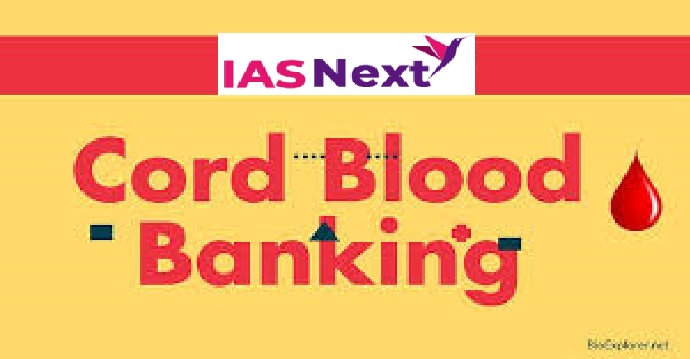CURRENT AFFAIRS
Get the most updated and recent current affair content on Padhaikaro.com
What is Cord blood banking?
- IAS NEXT, Lucknow
- 13, Nov 2021

Cord Blood Banking Services Market was valued at $1,126 mn in 2016, & is estimated to reach at $2,772 mn by 2023, registering a CAGR of 13.8% from 2017 to 2023.
- The rise in awareness related to the benefits of using cord blood stem cells for the treatment of chronic diseases, such as cancer, has led to an increase in the government initiative leading to an increase in number of cord blood banks, which is expected to fuel the market growth of cord blood banking services.
What is Cord Blood?
Cord blood (short for umbilical cord blood) is the blood that remains in the umbilical cord and placenta post-delivery.
- It contains special cells called hematopoietic stem cells that can be used to treat some types of diseases.
What is Cord blood banking?
Cord blood banking is the process of collecting the cord blood and extracting and cryogenically freezing its stem cells and other cells of the immune system for potential future medical use.
- Globally, cord blood banking is recommended as a source of hematopoietic stem cell transplantation for haematological cancers and disorders where its use is recommended.
- For all other conditions, the use of cord blood as a source of stem cells is not yet established.
What Can It Be Used For?
The umbilical cord fluid is loaded with stem cells.
- They can treat cancer, blood diseases like anemia, and some immune system disorders, which disrupt your body’s ability to defend itself.
- The fluid is easy to collect and has 10 times more stem cells than those collected from bone marrow.
- Stem cells from cord blood rarely carry any infectious diseases and are half as likely to be rejected as adult stem cells.
Concerns associated with stem cell banking:
- Over the past decade, stem cell banking has been aggressively marketed even as its use is still in experimental stages. But these companies charge enormous fees from parents to preserve cells.
- The concern here is that it is merely by emotional marketing that companies convince parents to bank the cells for several years promising future therapeutic use.